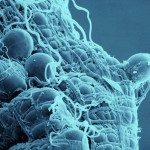Lien vers Pubmed [PMID] – 35248140
Lien DOI – 10.1186/s13071-022-05186-x
Parasit Vectors 2022 Mar; 15(1): 74
Dengue is endemic in the Philippines. Aedes aegypti is the primary vector. This study aimed to determine the hatching behavior and viability of Ae. aegypti first-generation (F1) eggs when exposed to temperature and photoperiod regimes under laboratory conditions.Parental eggs were collected from selected highland and lowland sites in the Philippine big islands (Luzon, Visayas, and Mindanao) during the wet (2017-2018) and dry (2018) seasons. F1 egg cohorts were exposed separately in environmental chambers at 18, 25, and 38 °C with respective photoperiods for 6 weeks. Phenotypes (percent pharate larvae [PPL], hatch rates [HRs], and reproductive outputs [ROs]) were determined.Results of multivariate analyses of variance (MANOVA) between seasons showed significant main effects of temperature, season, and big island on all phenotypes across all sites. Significant interaction effects between seasons on all phenotypes across sites were shown between or among (1) season and big island, (2) season and temperature, (3) big island and temperature, (4) season, big island, and temperature, (5) big island, altitude, and temperature, and (6) season, big island, altitude, and temperature. Factors associated with the big islands might include their ecology, available breeding sites, and day lengths due to latitudinal differences, although they were not measured in the field. MANOVA results within each season on all phenotypes across sites showed (1) significant main effects of big island and temperature, and (2) significant interaction effects between big island and temperature within the wet season and (3) between temperature and photoperiod within the dry season. PPL were highest at 18 °C and were formed even at 38 °C in both seasons. Pharate larvae might play an adaptive role in global warming, expanded distribution to highlands, and preponderance to transmit human diseases. HRs in both seasons were highest at 25 °C and lowest at 38 °C. ROs were highest at 25 °C in the wet season and at 18 °C in the dry season.Temperature and latitude of Philippine big islands influenced the development-related phenotypes of Ae. aegypti in both seasons. The two seasons influenced the phenotypes and their interaction effects with big island and/or temperature and/or altitude. Recommendations include year-round enhanced 4S control strategies for mosquito vectors and water pipeline installation in rural highlands.

